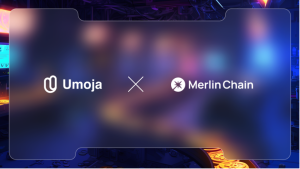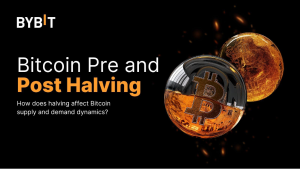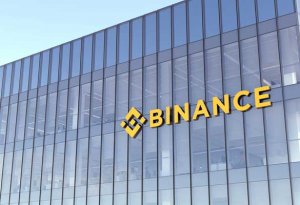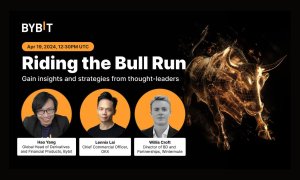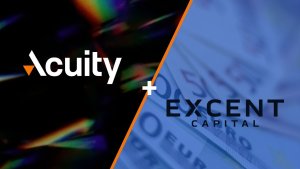Derivatives exchanges want multi-product retail customers. Why not offer odds on the Cheltenham Festival? Op Ed
In just one week, manual bets are placed to the amount of £150,000,000 by ordinary folk who attend Cheltenham Festival. Imagine if that was placed on exchanges and offered via MetaTrader 4? Here is an unusual view on why this is not such an unusual consideration and would bring on board a vast array of new traders from an important market segment whilst mitigating risk

One of the most poignant focuses for companies in the OTC FX and electronic trading sector these days, whether offering retail products directly to customers, or whether providing prime of prime liquidity across multiple asset classes to brokerages, is the need to provide a varied and diversified series of tradable assets.
This has come about for various reasons, two of the many significant being that counterparty credit is a massive concern for the interbank liquidity providers that dominate the market, the other being that operating margins and customer lifetime value for companies with single FX product ranges is at such a competitive level that it is almost impossible to scale unless longer term, more established and less immediately executable products with distinct prices make up at least a certain percentage of the total range offered by a retail broker.
Recently, in Hong Kong, I met with senior executives of Saxo Bank, which is one of the world’s most sophisticated prime of prime brokerages. The company’s executives majored on how the FinTech sector should be emulating diversified and highly successful e-commerce models from other sectors, with technological adaptivity being paramount.
The concensus was that retail firms must move on. Saxo Bank’s extremely detailed perspective demonstrated that the future is API, multi-product wealth management, democratized prime brokerage and high tech execution, backed up by an audience which was not comprised of IBs, but consisted of over 100 hedge fund managers and senior wealth management executives from China and across the world.
Saxo Bank is absolutely correct and has embraced the multi-product ethos from the ground up, as described in detail here.
This is a very important example of how the modernity of the firm’s product offering and infrastructure are inexorably linked, however there are other ways, which are less institutional and would be completely aimed at a very standardized, dare I say working class audience.
Whilst the OTC world is embracing the type of aforementioned sophistication and diversification, the futures exchanges are quite clearly on a very serious mission to attempt to lobby the regulators in regions with established financial markets economies to the extent that their purpose would be served in moving OTC business toward exchanges.
Outside of any lobbying attempts, the drive toward attempting to re-capture the retail audience that the expensive, slow and institutional trader-focused venues of Chicago, Frankfurt and London lost to the cheaper and faster OTC sector over the past two decades is evident in recent mergers and acquisitions attempts and activities.
For example, there was the acquisition by Deutsche Boerse in July 2015 of FX trading platform 360T for $796 million.
In addition, there has been a series of recent mergers and acquisitions which have involved large electronic marketplaces buying controlling interests in OTC electronic communication networks (ECNs).
Hotspot FX, one of the world’s most renowned OTC FX ECNs was bought by BATS Global Markets for $365 million in January 2015. It is also important to look at EUREX’s direction in which by September this year, the venue had extended its listed FX Futures and Options portfolio to include six new currency pairs while the overall minimum block trade sizes was reduced across all currency pairs to further improve hedging opportunities.
FinanceFeeds is also aware that this has been a focus for Deutsche Boerse for some time. Back in 2011, Deutsche Boerse took a minority stake in British FX technology solutions provider Digital Vega which was a technology vendor to buyside and sellside firms in the OTC derivatives sector.
At that time, the idea was to increase Deutsche Boerse’s positioning in the provision of pre-trade price transparency in the derivatives area for institutional investors and taking an initial footprint in the FX derivatives space. An investment agreement was signed in December last year, whereby Deutsche Börse will pay a US dollar amount in the single digit million range.
EUREX is another example of a large electronic derivatives venue having an interest in retail presence, having bought the 360T treasury system with the intention of moving the entire FX structure from an OTC bilateral system into an exchange clearing structure. There are also a number of equity exchanges moving into FX, such as NASDAQ which wanted to launch NASDAQ FX but were unable to do so as they failed to understand the nuances of liquidty provision in an OTC trading environment vs the exchange traded products dynamics. In any case there is a clear movement from exchanges into the OTC world.
Chicago-based electronic derivatives market place CME Group had also recently prepared itself to buy FastMatch from its three shareholers, Credit Suisse, BNY Mellon and FXCM, for around $200 million to $250 million, which has not happened but given the current situation at FXCM, it may well be re-approached for less capital outlay.
When looking at this through a very institutional and financial technology-orientated lens such as mine, it is very easy to focus on this type of market shift alone, despite its highly sophisticated nature and the gargantuan expense of operating.
There is, however, another way. A way that has existed among exchanges since the 1970s and is effectively a traditional binary option.
Mention the words binary options today, and images of third rate brands who have become the bete noire of police forces, government officials and regulators around the world, whose roots lie in affiliate marketing and lead buying (or stealing!) rather than the genuine electronic trading industry, and whose barely literate owners would be more at home at a time share pressure sales pitch or used car lot than within the R&D departments of the institutional technology and liquidity firms that we know and respect.
With these ghastly entities soon to be banished to oblivion, and those who wish to genuinely make trades based on simple principles without having to study charts or learn how to execute in a liquid market at exactly the right time, and those who do not have the average of $3700 that represents the deposit medium for most of the world or the $6600 average deposit amount in North America, there is a genuine option which will not result in money being stolen on false pretenses by binary options fraudsters, yet will also enable the multi-product fraternity whether via a directly connected futures exchange or MetaTrader’s platform connected to OTC markets and exchanges via the same brokerage.
In the 1970s, CME Group began offering weather futures to direct customers. This still exists today and yet is relatively uncommon and is not ever raised in any discussion about genuine, listed binary futures products on derivatives venues or in any discussion on how to attract low-deposit traders to steady and reliable products, which is a potentially large market share.
In Britain and to a global audience, futures contracts could be offered on special festivals, such as the outcome of the Cheltenham Festival, the world’s largest horse racing event.
I have attended the Cheltenham Festival several times, and it is an entire week of what can only be described as fanatics who save all year, attend Cheltenham in their thousands and literally blow hundreds of thousands of pounds placing tote bets on horses that enter the several races during the week.
I have seen with my own eyes suitcases with cash in them, overturned by intoxicated festival attendees, the contents going straight into the pocket of the tote operator, who then walks quietly away whilst pulling a hand cart.
If this was electronic, it would capture every attendee, engage them, and would also engage those who did not attend the Festival but would watch it on television and place a futures bet on a derivatives venue via their smartphone’s trading platform.
Tomorrow is the final day of this year’s Cheltenham Festival. The total amount bet amounting each year to over £150,000,000 in just one week.
This would be an enormous amount of business for firms wishing to put this onto their platforms and execute it via a futures exchange, especially bearing in mind that it would not be confined just to the festival itself. This £150,000,000 is spent by attendees only.
There would be no leverage, no counterparty risk. Simply running a book via a derivatives exchange.
Betting tips are currently the preserve of tabloid newspapers, which are being read in physical paper format less and less, and to the race week itself.
£150,000,000 in one week, with odds chosen by the house, is not to be sniffed at, and is a reliable and effective means of fending off the exchange lobbyists and corporate attempts to close down retail OTC firms, as well as spreading risk and ensuring a considerable customer segment makes for a steady base that bolsters the OTC side of a brokerage.
The regulators would also not be able to accuse anyone of horseplay, either. Yes, I know, very droll.



